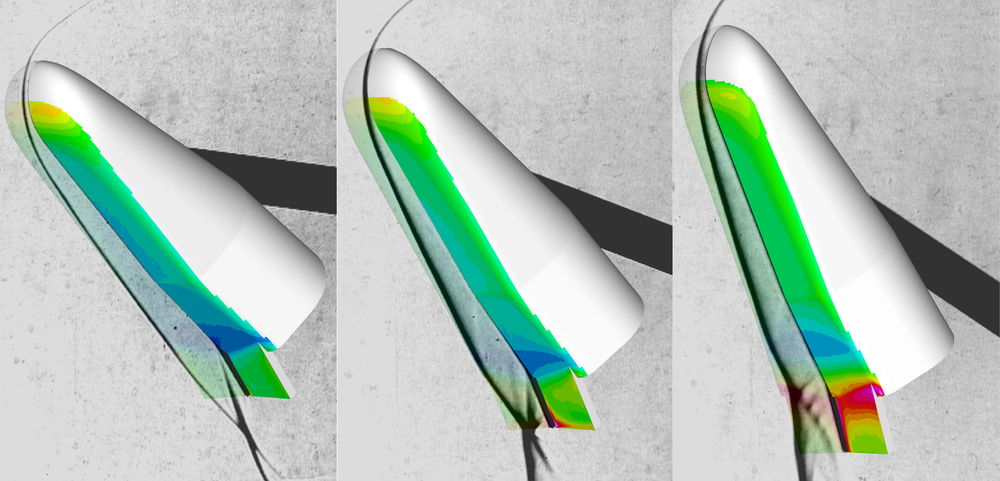Supersonic and Hypersonic Technologies Department

Technologically oriented research for industrial developments of supersonic and hypersonic flight vehicles
In the Supersonic and Hypersonic Technologies department, we draw on more than half a decade of expertise in conceptional design and development of supersonic and hypersonic flight vehicles. Our main activities focus on the development and use of this expertise for conception, design and analysis of supersonic and hypersonic flight configurations by means of fast engineering design tools and experimental verification in wind tunnels for industrial applications.
Competencies
One of our key objectives is the experimental aerodynamic and aerothermal investigation on complete configurations or sub-systems of supersonic and hypersonic flight vehicles. Intakes for air-breathing propulsion systems, structures and materials for missiles and spacecraft are qualified in flight relevant environment of our facilities. Our department plays a key role in testing of satellite structures and materials with respect to their demise behavior during re-entry phase in the atmosphere. Development of flight instrumentation and data acquisition units for health monitoring for hypersonic flights is a further worldwide known capability of the department. Responsibilities for instrumentation of DLR’s hypersonic flight experiments as well as flight hardware and software for the ESA’s ExoMars 2016 mission and NASA’s Dragonfly mission to the Titan moon of Saturn are some examples.
At DLR's Cologne site, we operate a Vertical Test Section that is unique in Germany and integrates a 'Hot Plume Interaction Test Facility'. This test facility plays a very important role in the development of reusable future launchers in Europe. It allows experimental study of the multi plumes interaction, plume impact on the rocket base and plume-ground interaction during active retro propulsion phase of reusable launcher flights and landing modules for interplanetary missions. Improvement or development of advanced measurement techniques and algorithms for the analysis of flight physics in hypersonic is essential for the satisfaction of complex measurement tasks of the future and will be developed continuously.
Main research topics
- Design, development and integration of flight instrumentation and data acquisition systems for spacecraft and missiles
- Experimental investigations on aerodynamic stability and controllability of missiles and spacecraft
- Conceptional design and development of supersonic and hypersonic flight vehicles by means of fast engineering design tools and experimental verification
- Design and experimental verification of intakes for air-breathing propulsion of supersonic and hypersonic vehicles
- Experimental investigations on launchers with focus on stage separation, hot plume interactions and qualification of hot structures
- Characterization and qualification of thermal protection materials and hot structures of re-entry vehicles, satellites, launchers and missiles
- Development of spectroscopic measurement techniques for the characterization of high enthalpy flows
- Development of advanced algorithms for the data analysis of supersonic and hypersonic experiments
- Aerodynamic and aerothermal data base for validation of physical models and numerical tools
